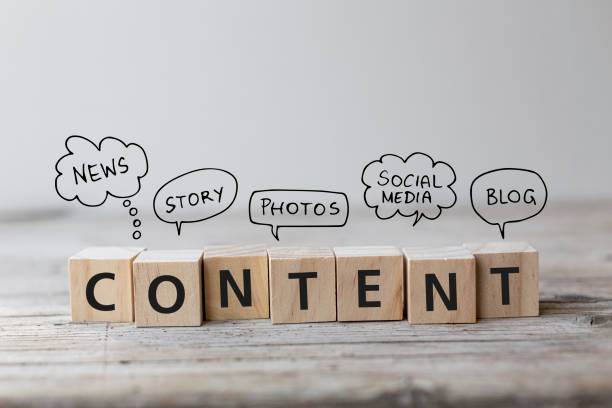In an era where clients increasingly turn to social media to find mental health professionals, neuropsychologists can harness these platforms to build trust, educate audiences, and attract clients seeking specialized services like cognitive assessments or brain injury rehabilitation. Neuropsychology social media strategies involve creating engaging, HIPAA-compliant content to enhance visibility and foster client connections. By leveraging platforms like LinkedIn and Instagram, neuropsychologists can establish authority and grow their practice in 2025. This guide explores effective social media strategies, essential tools, and practical steps for neuropsychologists to succeed online, drawing on mental health marketing trends.
Table of Contents
- Why Social Media Matters for Neuropsychologists
- Core Social Media Strategies for Neuropsychology
- Social Media Tools for Neuropsychologists
- Choosing the Right Platforms
- Creating Engaging, Compliant Content
- Building a Consistent Posting Schedule
- Engaging with Your Audience
- Ensuring HIPAA Compliance in Social Media
- Measuring Social Media Success
- Common Challenges and Solutions
- Frequently Asked Questions (FAQs)
- Conclusion
Why Social Media Matters for Neuropsychologists
Social media is a powerful tool for neuropsychologists to reach clients, with over 60% of adults using platforms like LinkedIn, Instagram, and Facebook to research healthcare providers, as noted in The Ultimate Guide to Psychology Tools. Neuropsychology social media builds brand awareness, showcases expertise in areas like dementia evaluation, and drives traffic to your website or telehealth services. Unlike traditional marketing, social media offers cost-effective, targeted engagement, fostering trust through educational content and client interaction. It also supports practice growth by connecting with local and virtual clients, positioning neuropsychologists as trusted leaders. For expert social media solutions, visit Mental Health IT Solutions.
Core Social Media Strategies for Neuropsychology
Effective neuropsychology social media strategies focus on three pillars: education, engagement, and compliance. Educational content, like posts on “Understanding Cognitive Testing,” establishes expertise and attracts clients. Engagement involves responding to comments and sharing client stories (with consent) to build rapport, as highlighted in Mental Health UX/UI Design. Compliance ensures HIPAA adherence by avoiding Protected Health Information (PHI) in posts. These strategies create a professional, approachable online presence that resonates with clients seeking specialized neuropsychological care, driving inquiries and loyalty.
Social Media Tools for Neuropsychologists
The right tools streamline neuropsychology social media efforts. The table below compares HIPAA-compliant or suitable social media management tools, excluding competitors like TherapySites, with links to their official websites.
| Tool | Key Benefits for Neuropsychologists | Platform Link |
|---|---|---|
| Hootsuite | Schedule posts, track engagement, and manage multiple platforms efficiently. | Hootsuite |
| Buffer | User-friendly scheduling and analytics for consistent social media presence. | Buffer |
| Canva | Create professional visuals like infographics for brain health education. | Canva |
| Sprout Social | Advanced analytics and engagement tools for targeted client interaction. | Sprout Social |
These tools enhance content creation and analytics, as discussed in Therapist Marketing Guide.
Choosing the Right Platforms
Selecting platforms is critical for neuropsychology social media success. LinkedIn is ideal for professional networking, sharing articles on topics like traumatic brain injury. Instagram excels for visual content, such as infographics on cognitive health, appealing to younger clients. Facebook supports community building through groups focused on mental health education, as suggested in Why Therapists Need a Blog. Avoid platforms like TikTok if they don’t align with your professional tone or HIPAA compliance needs. Focus on 1-2 platforms to maintain consistency and maximize engagement with your target audience.
Creating Engaging, Compliant Content
Content is the heart of neuropsychology social media. Share educational posts, like “5 Myths About Cognitive Assessments,” or carousel graphics explaining ADHD testing, created with Canva. Use client testimonials (with consent) to build trust, avoiding PHI like names or diagnoses, as emphasized in HIPAA Compliance for Therapists. Incorporate local keywords (e.g., “neuropsychologist Seattle”) to attract nearby clients. Post videos discussing brain health tips, ensuring professional settings and clear disclaimers about non-medical advice. Engaging, compliant content drives interaction and reinforces your expertise in neuropsychology.
Building a Consistent Posting Schedule
Consistency strengthens neuropsychology social media presence. Post 2-3 times weekly, balancing educational content, practice updates, and engagement prompts (e.g., “What’s your top brain health tip?”). Use Hootsuite or Buffer to schedule posts, ensuring regular activity without overwhelming your workflow, as noted in Lead Generation for LMFTs. Align content with mental health awareness events, like Brain Injury Awareness Month, to boost relevance. Analyze engagement metrics to determine optimal posting times, maintaining a predictable schedule that keeps your audience connected and engaged with your practice.
Engaging with Your Audience
Engagement is key to neuropsychology social media success. Respond to comments and messages promptly, using professional, empathetic language to build rapport, as suggested in Practice Growth for Therapists. Host Q&A sessions on Instagram Live to answer general questions about cognitive assessments, avoiding PHI. Share user-generated content, like client success stories (with permission), to foster community. Follow local mental health organizations and engage with their posts to expand your network. Active engagement humanizes your practice, encouraging client inquiries and strengthening trust in your expertise.
Ensuring HIPAA Compliance in Social Media
HIPAA compliance is non-negotiable for neuropsychology social media. Avoid sharing PHI, such as client names, diagnoses, or assessment details, in posts, comments, or direct messages, as emphasized in HIPAA Compliance for Therapists. Use secure platforms for private communications, like HIPAA-compliant messaging apps, and ensure Business Associate Agreements (BAAs) for tools like Sprout Social. Display a privacy policy on your website, linked in your bio, and train staff on social media protocols. Regular audits of posts and interactions prevent compliance risks, safeguarding client trust and legal adherence.
Measuring Social Media Success
Tracking performance optimizes neuropsychology social media efforts. Use Hootsuite or Sprout Social analytics to monitor metrics like post reach, engagement rate (likes, comments, shares), and website clicks, as noted in EHR Evolution in Mental Health. Google Analytics tracks traffic from social media to your site, ensuring HIPAA-compliant settings. Set goals, like increasing engagement by 15% quarterly, and review metrics monthly to refine content strategies. Collect follower feedback via polls (e.g., “What mental health topic interests you?”) to align posts with audience needs, driving sustained growth.
Common Challenges and Solutions
Neuropsychologists may face social media hurdles:
- Time Constraints: Use Buffer to schedule posts, freeing time for client care.
- Low Engagement: Experiment with visuals and Q&A posts to boost interaction.
- Content Ideas: Repurpose blog content or use Canva templates for quick, professional posts.
- HIPAA Risks: Audit posts regularly and use secure tools to avoid PHI exposure.
These solutions ensure effective social media strategies, as explored in Teletherapy Platform Development.
Frequently Asked Questions (FAQs)
- What is neuropsychology social media?
It’s the use of social media platforms to promote neuropsychological services and engage clients with educational content. - Why is social media important for neuropsychologists?
It builds trust, increases visibility, and attracts clients seeking specialized care like cognitive assessments. - Which social media tools are best for neuropsychologists?
Hootsuite and Canva streamline scheduling and content creation for professional, compliant posts. - How do I ensure HIPAA compliance on social media?
Avoid PHI, use secure platforms, and maintain BAAs, with regular content audits. - How often should I post on social media?
Aim for 2-3 posts weekly, balancing education and engagement for consistent presence.
Conclusion
Neuropsychology social media strategies empower practitioners to connect with clients, showcase expertise, and grow their practice through engaging, HIPAA-compliant content. By choosing the right platforms, creating valuable posts, and measuring performance, neuropsychologists can build trust and visibility in 2025. The tools, strategies, and solutions outlined provide a clear path to social media success, positioning practices as leaders in mental health care. Elevate your social media presence with Mental Health IT Solutions.







